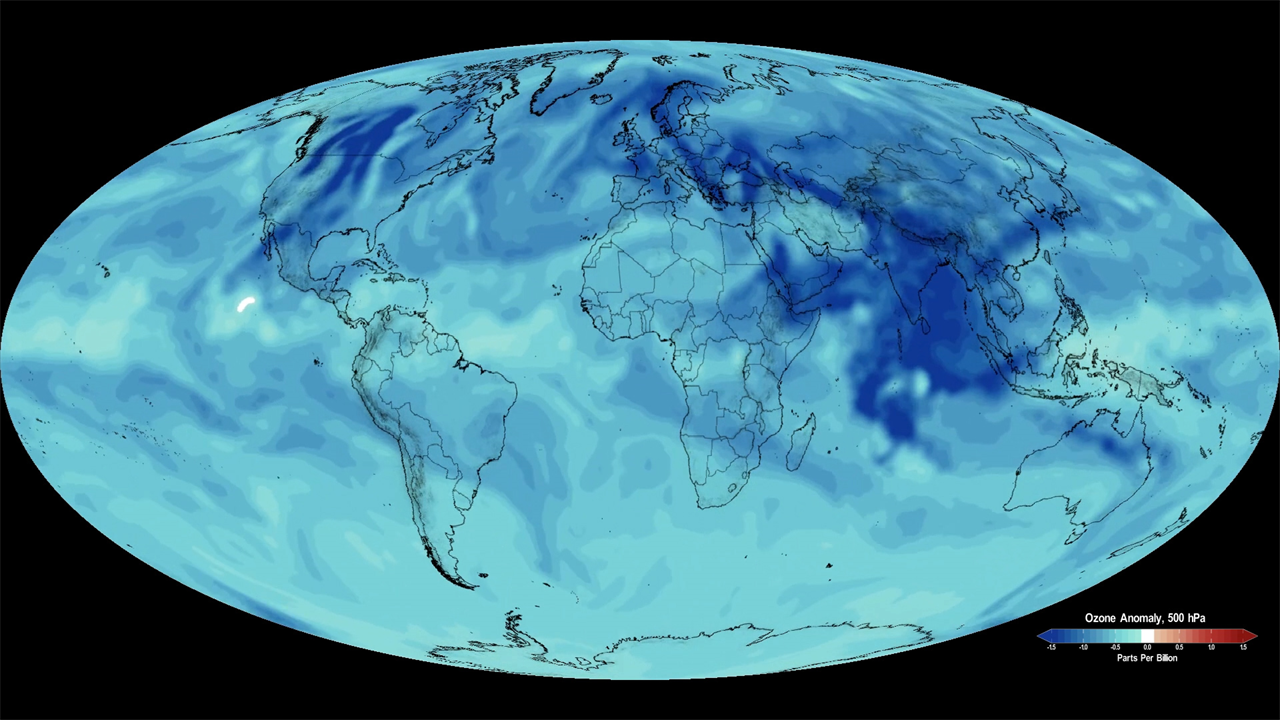Earth’s Atmosphere Reacted in Surprising Ways to Emission Reductions From COVID Pandemic
0 View
Share this Video
- Publish Date:
- 10 November, 2021
- Category:
- Covid
- Video License
- Standard License
- Imported From:
- Youtube
Tags

Global restrictions during the COVID-19 pandemic caused massive reductions in travel and other economic activities, resulting in lower emissions. Seen here, almost empty highways in Colombia during the pandemic. Credit: International Monetary Fund
The Earth’s atmosphere responded in surprising ways to the reduction in emissions during the pandemic, demonstrating how closely climate warming and air pollution are linked.
The COVID-19 pandemic and the resulting restrictions on travel and other economic sectors by countries around the world have dramatically reduced air pollution and greenhouse gas emissions within weeks. That sudden change gave scientists an unprecedented view of results that would take years to regulate.
A comprehensive new study of the pandemic’s effects on the atmosphere, using satellite data from NASA and other international space agencies, reveals some unexpected findings. The study also provides insights into tackling the dual threats of global warming and air pollution. “We’re past the point where we can view these as two separate issues,” said Joshua Laughner, lead author of the new study and a postdoctoral researcher at Caltech in Pasadena, California. “To understand what causes changes in the atmosphere, we need to think about how air quality and climate influence each other.”
The article, published Nov. 9 in the Proceedings of the Natural Academy of Sciences, grew out of a workshop sponsored by Caltech’s WM Keck Institute for Space Studies, led by scientists from that institution and from the Jet Propulsion Laboratory in Southern California. , which is operated by Caltech. Participants from approximately 20 U.S. and international universities, federal and state agencies, and labs identified four atmospheric components for in-depth study: the two major greenhouse gases, carbon dioxide and methane; and two air pollutants, nitrogen oxides and microscopic nitrate particles.
carbon dioxide
The most surprising result, the authors noted, is that while carbon dioxide (CO2) emissions fell by 5.4% in 2020, the amount of CO2 in the atmosphere continued to grow at about the same rate as in previous years. “During past socioeconomic disruptions, such as the oil shortage in 1973, you could immediately see a change in the growth rate of CO2,” said David Schimel, head of JPL’s carbon group and a co-author on the study. “We all expected to see it this time too.”
Using data from NASA’s Orbiting Carbon Observatory-2 satellite, launched in 2014 and the NASA Goddard Earth Observing System’s atmospheric model, the researchers identified several reasons for this result. First, although the 5.4% decrease in emissions was significant, the growth in atmospheric concentrations fell within the normal range of annual variations caused by natural processes. Also, the ocean hasn’t taken up as much CO2 from the atmosphere as it has in recent years — probably in an unexpectedly rapid response to the reduced pressure of CO2 in the air at the ocean’s surface.
Air Pollutants and Methane
Nitrogen oxides (NOx) can react with other atmospheric compounds in the presence of sunlight to create ozone, which poses a threat to human, animal and plant health. However, that is not their only reaction. “NOx chemistry is this incredibly complicated ball of yarn, where you pull on one part and change five other parts,” Laughner said.
As the coronavirus pandemic slowed global trade in early 2020, emissions of nitrogen oxides (NOx) — which cause ozone, a threat to human health and the climate — fell by 15% globally, with local reductions of up to 50%, according to a study led by scientists at NASA’s Jet Propulsion Laboratory. Credit: NASA’s Goddard Space Flight Center/Scientific Visualization Studio
As previously reported, COVID-related declines in NOx rapidly led to a global reduction in ozone. The new study used satellite measurements of a variety of pollutants to reveal a less positive effect of limiting NOx. That pollutant reacts to form a short-lived molecule called the hydroxyl radical, which plays an important role in breaking down long-lived gases in the atmosphere. By reducing NOx emissions — as beneficial as that was in cleaning up air pollution — the pandemic also limited the atmosphere’s ability to cleanse itself of another important greenhouse gas: methane.
Molecule by molecule, methane is much more effective than CO2 at trapping heat in the atmosphere. Estimates of the amount of methane emissions that fell during the pandemic are uncertain because some human causes, such as poor maintenance of oilfield infrastructure, are not well documented, but one study calculated the reduction was 10%.
However, as with CO2, the drop in emissions did not reduce the concentration of methane in the atmosphere. Instead, methane grew 0.3% over the past year — faster than at any other time in the past decade. With less NOx, there was less hydroxyl radical to wash away methane, keeping it in the atmosphere longer.
Lessons from the pandemic
The study stepped back to ask what the pandemic could teach about what a lower-emissions future might look like and how the world might get there.
Notably, emissions returned to near pre-pandemic levels by the end of 2020, despite reduced activity in many sectors of the economy. The authors reason that this emissions recovery was likely necessary for companies and individuals to maintain even limited economic productivity, leveraging the global energy infrastructure that exists today. “This suggests that reducing activity in these industrial and residential sectors is not practical in the short term” as a way to reduce emissions, the study said. “To permanently reduce emissions from these sectors, they need to move to low-carbon technology.”










